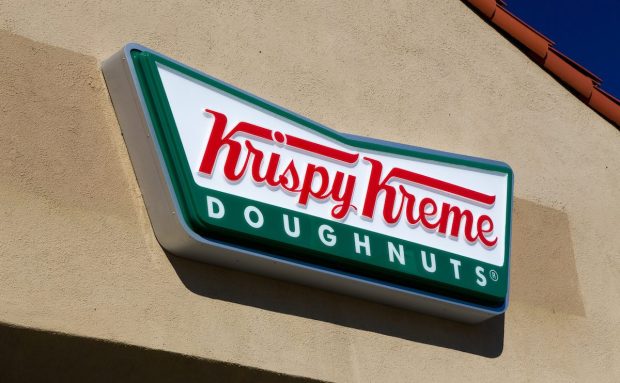Grocery, Convenience Store Distribution Help Krispy Kreme Combat Inflation

As food prices rise, Krispy Kreme is leveraging its business selling fresh-made donuts to grocers and convenience stores to weather these inflationary challenges.
On a call with analysts Wednesday (Aug. 17) discussing the company’s second-quarter 2022 financial results, the sweet treat brands’ executives explained how the company’s hub-and-spoke strategy is mitigating the impact.
The company leverages its “Delivered Fresh Daily (DFD) Doors,” stores at which it drops off its donuts every day to be sold at the same prices as they would be in a Krispy Kreme shop, to drive more revenue from its locations. Conversely, stores that do not do this felt the impacts of inflationary headwinds more acutely.
“Impacting margins this quarter was the underperformance of hubs without spokes,” Krispy Kreme President and CEO Mike Tattersfield said, highlighting a 400-basis-point, year-over-year decrease in margins due to inflation and promotional spending. “In contrast, hubs with spokes saw an increase in their margin delta from hubs without spokes due to the benefit of additional off-premise sales through the increase in DFD revenues.”
Certainly, food prices are on the rise, and while many businesses are absorbing some of these increases, consumers are feeling the effects acutely. July’s Consumer Price Index for All Urban Consumers (CPI-U) data, reported by the U.S. Bureau of Labor Statistics (BLS), noted that food at home (i.e., grocery) prices increased 13%, and food away from home (i.e., restaurant) prices rose 8%.
Moreover, findings from a national online study of 3,783 consumers conducted by PYMNTS last month revealed that consumers report paying 20% to 30% more for retail and grocery purchases and to eat at restaurants.
Read more: Why Retailers Should Worry About Inflation but Dread the Wealth Effect
As such, many consumers are cutting back on their food spending, reducing purchases of non-essential foods (such as, say, a sweet treat like a donut). According to data from PYMNTS’ “Consumer Inflation Sentiment” study, which drew from a July survey of nearly 3,800 U.S. adults, 60% of consumers have cut down on nonessential grocery spending due to rising prices. Moreover, only 15% reported that inflation has not impacted their food spending.
See more: Three in Five Consumers Cut Back on Nonessential Grocery Spending
Tattersfield noted that “the inflationary times” explicate the value of the company’s hub-and-spoke model, showing how, around the world, it “really allows us to drive our revenue per hub.”
Through these spokes, the company’s total number of “points of access” (Krispy Kreme stores and DFD Doors) surpassed 6,000 in the United States and Canada in the quarter, and the sweet treats brand intends to continue to leverage this capex-light method of expansion to reach 10,000 points of access in the region.
